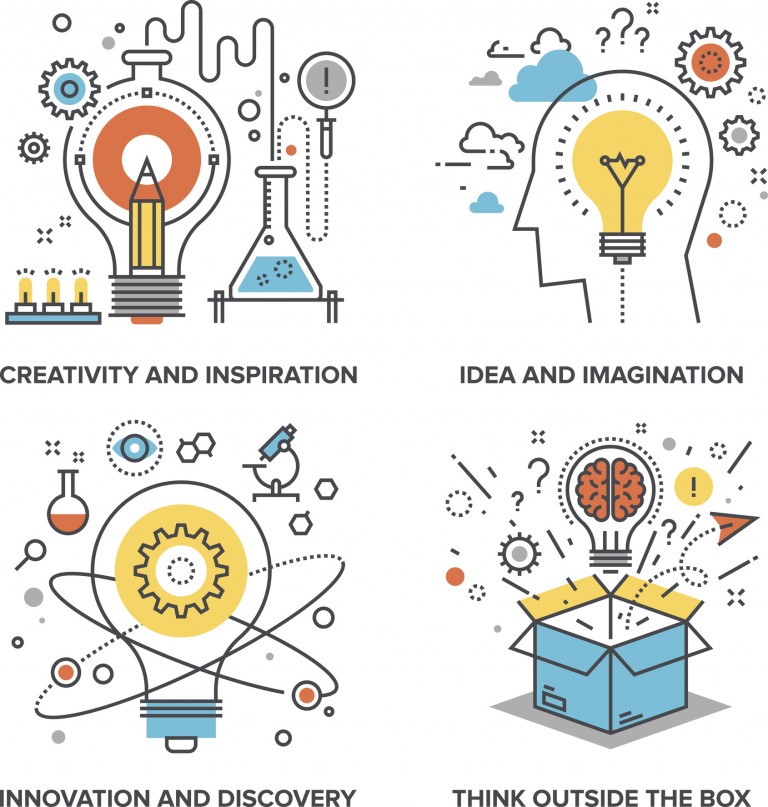NEWS | Understanding the ingenuity process
Published On: Wednesday, 8th Mar 2017

David Falzani, SMF President and honorary professor of entrepreneurship at Nottingham University Business School (NUBS) takes us through NUBS’ ingenuity process which is at the heart of its entrepreneurship module.
Ingenuity, inventiveness, originality – all these are at the heart of entrepreneurship. Entrepreneurs, after all, are fundamentally problem solvers that offer creative, innovative solutions and responses to problems – gaps – in organisational or market-oriented thinking.
However, creative solutions don’t just materialise out of thin air. They emerge from lateral thinking processes and problem-solving approaches which attempt to grapple with not just the problem itself, but the factors leading to the problem, the consequences of the various solutions potentially available to us, and the possibility of new, unique ideas which can be mobilised into a concrete plan of action. In other words, ingenuity is not innate. Whether we’re talking about products that fill a particular gap in the market or internal changes to a business, ingenuity is a problem-solving process that taps into a natural human capacity for creative solutions.
They say that quick decisions are not always the best decisions. That’s why the ingenuity process demands organisational time and respect to get the best results – that is, after all, why we talk about it as a ‘process’. It represents a progressive working-through of the obstacles and issues in question. So, what might this process look like?
Defining the problem
If you’re looking for creative solutions, you must already be aware that there is a problem or obstacle. The ingenuity process firstly seeks to understand the problem in its entirety by asking questions such as, but not limited to:
- Whose problem is this?
- How urgent is the problem?
- How might we break the problem down into manageable parts?
In other words, ingenuity first requires a comprehensive, concrete analysis and explanation of the issue at hand—as this will form the basis of the next step, ie your strategy. Knowing the component parts of the problem should give you a clearer idea of the various objectives required to solve each element of the issue individually.
It will also allow you to test your potential strategy against the problem itself by making clear the various implications and impacts of your solution on the different factors leading to the problem in the first place. Defining the problem in this way may even solve the problem immediately by making clear the various blind spots in the organisation’s relationship with the issue thus far. To come up with an original, ingenious solution, however, requires you to document the problem – and your strategy – in its entirety. There is no single answer to a problem, and that’s why all possible avenues must be explored before action is taken.
Documenting the ingenuity process
Documentation is vital in any organisational context, as it will form the basis of any concrete, problem-solving proposal to your colleagues, shareholders, or fellow management team. It enables you to communicate the gravity of the problem and all its complexities in a way that creates a case for taking action and moving forward.
You’ve hopefully thought about the problem in depth, measuring its impacts, causes, and implications of your proposed strategy. You need to communicate this creative thinking in clear, concise terms – not only to justify your strategy but also to hit the nail on the head, so to speak. So, write a statement describing the predicament which addresses:
- The processes involved
- The facts as they are and why they demand action
- The consequences of not solving the problem
This should form the basis of a concise justification as to why your strategy is not only a good potential course of action but an imperative one too. Supplementing this statement with a comprehensive analysis of root causes, a map of the different processes leading to and from the issue, and arranging different considerations according to priority, will provide a solid basis for moving forward and generating real solutions and ideas with your colleagues.
Discovering creative solutions
So, you’ve analysed the problem in its entirety, demonstrated the importance of solving the problem, and hopefully proposed a basic strategy for moving past the issue. Everyone agrees creative solutions are needed, and there are clear ideas about where the problems lie and where action needs to be taken.
If these steps represent an objective, concrete approach to a problem, one that attempts to quantify the issues at hand, then it is from here that real creativity comes into play. You need to designate a time and a place for non-judgmental idea generation.
Exercises such as looking for analogies in other markets or previous experience can be helpful in illustrating where other solutions have fallen short and what needs to be done differently. Take an example from another company, perhaps, and try to generate a set of hypothetical solutions for the problems they faced – it will give you a much-needed detached perspective while providing a focal point for new ideas. Get to the root of your current problem-solving processes. What organisational assumptions are underlying them? How might you change those assumptions to move beyond paradigmatic thinking?
Brainstorm, argue, debate, deconstruct – and ultimately, generate as many ideas as possible in response to the problem at hand. Many of these ideas might not solve the problem in its entirety, but they might solve it partially – and if not, the point is that they open up new space for alternative, lateral solutions. This is the most important element of creative idea generation – allowing yourself to be wrong, questioning your assumptions, and making the box small enough that thinking outside of it becomes second nature.
Determine your course of action
This is the hardest part of the ingenuity process, and the part most burdened with the kind of risks entrepreneurs must take on. Firstly, you need to step back from the idea generation stage. Getting sucked into individual ideas and potential responses can mean losing sight of the bigger picture. You now need to consider all your ideas in their entirety and as a collective whole, asking yourself:
- What kind of underlying logic characterises the different groups of ideas generated?
- What solution does this logic point towards? Does it sufficiently address the problem?
- Have all derivative ideas or combinations of ideas been seriously considered?
It’s time to collate your ideas and think hard about the nature of the problems they’re speaking to. The ingenuity process is then not so much about idea generation as it is about critical self-reflection on the logic and norms governing ‘business as usual’. It’s only by questioning your assumptions and considering your ideas in relation to these assumptions that a truly original, creative solution can emerge. Here, the ingenuity process transforms: it is no longer just about thinking outside of the box; it is about questioning how you ended up inside it in the first place.

